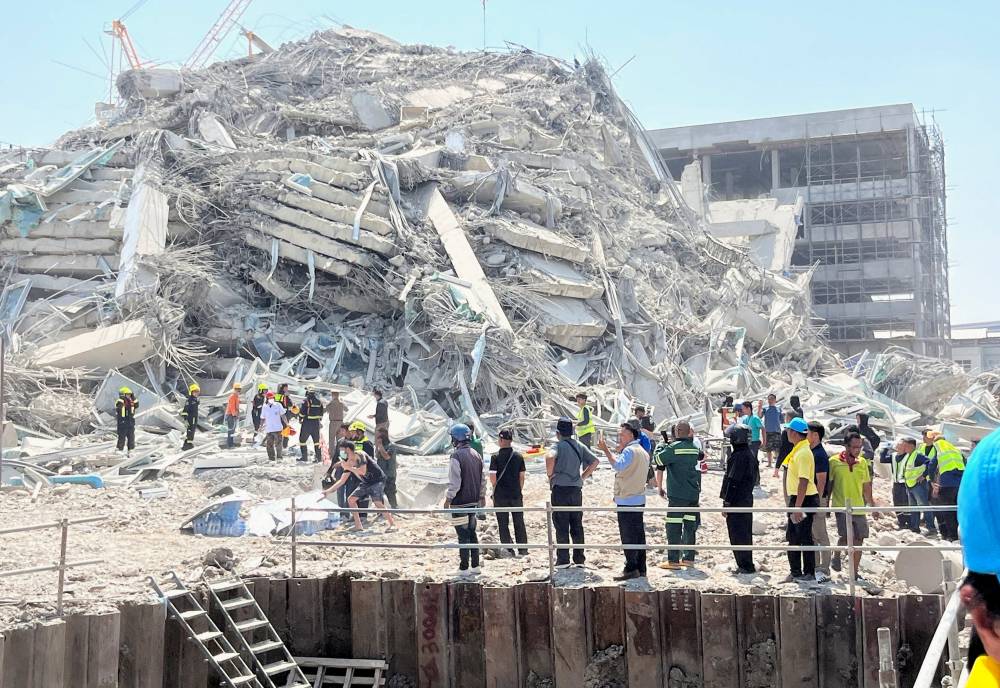US aid cuts leave Myanmar starving

MAE SOT, Thailand—Mohammed Taher clutched the lifeless body of his 2-year-old son and wept. Ever since his family’s food rations stopped arriving at their internment camp in Myanmar in April, the father had watched helplessly as his once-vibrant baby boy weakened, suffering from diarrhea and begging for food.
On May 21, exactly two weeks after Taher’s little boy died, US Secretary of State Marco Rubio sat before Congress and declared: “No one has died” because of his government’s decision to gut its foreign aid program. Rubio also insisted: “No children are dying on my watch.”
That, Taher says, “is a lie.”
“I lost my son because of the funding cuts,” he says. “And it is not only me—many more children in other camps have also died helplessly from hunger, malnutrition and no medical treatment.”
14M deaths
Taher’s grief is echoed in families across conflict-ravaged Myanmar, where the United Nations estimates 40 percent of the population needs humanitarian assistance and which once counted the United States as its largest humanitarian donor. Now, in Asia, it has become the epicenter of the suffering unleashed upon the world’s most vulnerable by President Donald Trump’s dismantling of the US Agency for International Development.
And like Taher’s son, Mohammed Hashim, it is Myanmar’s children who have borne the brunt of the fallout. A study published in The Lancet journal in June said the US funding cuts could result in more than 14 million deaths, including more than 4.5 million children under age 5, by 2030.
Taher is one of 145,000 people forced to live inside squalid, prison-like camps in the state of Rakhine by the ruling military. Most, like Taher, are members of Myanmar’s persecuted Rohingya minority, which was attacked by the military in 2017 in what the United States declared a genocide.
After their food rations evaporated, Taher’s family meals shrank from three a day to one. Taher, his wife and his five children grew so weak, there were days they could not walk.
‘US to blame’
Little Hashim faded. The clever, caring toddler, who loved playing football and whose cheerful chirps of “Mama” and “Baba” once filled their shelter, could barely move. Anguished by his son’s sobs, Taher tried to find help. But with soldiers banning residents from leaving the camp to find food, and with no money for a doctor, there was nothing Taher could do.
On May 7, Taher and his wife watched their baby take his final breath. Their other children began to scream.
Neighbor Mohammed Foyas, who visited the family after Hashim died and was present for his burial, confirmed the details to The Associated Press (AP).
Asked who is to blame for the loss of his son, Taher is direct: the United States.
“In the camps, we survive only on rations,” he says. “Without rations, we have nothing—no food, no medicine, no chance to live.”
Throughout Myanmar and in the refugee camps along its borders, the cuts in aid have left children screaming and crying for food. The USAID cuts come at a time when other countries have slashed humanitarian aid, in some cases saying they need the funds to shore up defense. Myanmar’s population has also already been weakened by years of war.
‘Lowest layer of hell’
Health-care services have been hobbled, and, in some places, vanished. The sick and the starving have wasted away, and people must forage for hours in the jungle each day to find food. Violence and stealing have surged, and young people are huffing glue to numb their hunger pains.
This story is based on interviews with 21 refugees, five people trapped inside Myanmar’s internment camps, and 40 aid workers, medics and researchers.
Safehouses that sheltered dissidents have shuttered, leaving people at the mercy of Myanmar’s merciless military, which has killed more than 7,300 civilians and imprisoned nearly 30,000 in its torture-rife detention centers since its takeover in 2021.
“For Myanmar, we are in the lowest layer of hell already,” says Victor, who headed an emergency program for the aid group Freedom House that helped hundreds who defied Myanmar’s military regime.
Since the US cuts shut down the program, around 100 civilians have sent Victor frantic messages pleading for help he can no longer give.
“I don’t know what to tell them,” says Victor, who goes by one name.
Dire situation
Though the United States only spends around 1 percent of its budget on foreign aid, Trump declared USAID—once the world’s leading donor of humanitarian assistance—a waste of money and dissolved it.
Kneecapped by aid cutbacks, the UN’s World Food Program (WFP) in April severed assistance to 1 million people across Myanmar. In central Rakhine, the number of families unable to meet basic food needs has jumped to 57 percent from 33 percent in December 2024, according to the WFP.
















